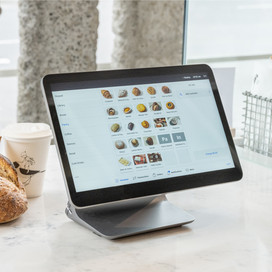Table of contents
If you’ve recently started freelance work or are thinking of doing so, you’re far from being alone. According to recruitment specialists Talent, 3.15 million Australians are currently working on the basis of contract or freelance-style employment arrangements, a figure which amounts to 28% of the workforce. The talent network Expert 360 published figures in January 2022 which highlighted the enormous growth of the freelance sector in Australia. According to these statistics, the years between 2015 and 2019 saw the overall worth of the freelance sector in Australia growing at a Compound Annual Growth Rate (CAGR) of 73%, from $0.7B in 2015 to $6.3B in 2019.
In case you missed it, we recently chatted with Victoria Devine, owner of Zella and She’s On The Money about how to manage your finances as a freelancer. Read more here.
Why freelance work is appealing
From the point of view of most individuals, freelancing can be summed up in one word – freedom. As a freelancer you have the freedom to pick and choose which jobs your take, to work flexible hours which suit you and to shape your work around the rest of your life. The downside to this, of course, is the removal of the safety net provided by most standard employment, such as holiday and sick pay. In addition to this, a freelance worker has to earn enough to cover all of their expenses, including the annual tax bill, and to amass enough of a buffer in terms of savings to tide them over any periods when work drops off.
That’s why it’s vital to nail your freelance rates based on your experience, the market and your clients needs. Too low and you won’t be able to earn enough to pay yourself a living wage on top of putting sufficient monies aside to cover slack periods. Too much and you might struggle to find clients willing to pay and find yourself being undercut by rival freelancers. Knowing exactly how much to charge as a freelancer – particularly if you’ve just turned freelance – can be tricky, and the process begins with asking yourself a few questions:
Do you charge a hourly or fixed rate?
You can charge an hourly rate for your work on a particular project, or a fixed fee for the completed project. Each comes with pros and cons.
Hourly pricing is more suited to some fields, such as copywriting, coding and designing, in which it is often fairly easy to estimate precisely how many hours you’ll have to spend on a job. This makes it the easiest choice for freelancers just starting out in professions such as these. Conversely, as you become more established, experienced and better at your job, the chances are that you can complete the work you’re doing more quickly. If you charge an hourly rate then, perversely, you end up being penalised for being able to deliver more quickly.
This is when the idea of a fixed rate for a specific project becomes more appealing. In this case, the client is not paying simply for the hours you spend on a job but for the quality of the final delivery. One halfway-house solution would be to charge a daily rate rather than an hourly rate. If your daily rate is set at slightly less than you would charge for 8 hours, the client enjoys a small discount while you – by charging for the full day – are guaranteed a set amount even if you finish the work more quickly.
Are you willing to negotiate?
Clients often try to negotiate a better price for themselves, so be prepared for this. By adding a few dollars to your price, create the ’wriggle room’ to drop the price a little but still charge what you feel to be a fair rate. As well as negotiating the price, be careful to clearly delineate what the job actually involves. Some clients like to add a little bit of extra work here and there and, before you know it, you’re delivering a much larger project for the same price. Have the scope and details of the project set out in contract form – or at the very least in writing – when agreeing the job, and if the client asks for any more, negotiate an uptick in the fee being charged.
How do you know what others charge?
One reliable guide to the right freelancer pricing can be found in the rates being charged by other freelancers in the same field. Take a look at freelancer websites such as UpWork or PeoplePerHour to find a range of prices depending upon the track record and experience of the freelancers in question.
Browsing the ‘Accounting’ section of UpWork at the time of writing, for example, it’s possible to find freelancers charging rates which range from $16 per hour to $100 per hour. By reading a range of profiles, get an idea of the kind of price generally being charged by an accountant with your qualifications and experience. By their nature, sites of this kind tend to pitch at the lower end of the market, so a price based on these criteria should only be a starting point from which you can build as you establish yourself and your portfolio of successful projects.
There are also online tools which you can use to calculate freelance rates. The amounts given are based on location, the details you enter about your own experience and, in some cases, feedback provided by other freelancers.
Popular online tools can be found at: Glassdoor, Bonsai and LinkedIn Salaries.
One other way of finding out what other freelancers are charging is slightly sneaky, but undeniably an effective method of asking them, albeit not directly. Many freelancers are unwilling to share the rates they charge with potential competitors but, if you’ve been asked to quote for a project and you’re not sure what to charge, you could always pitch a similar project to other freelancers, posing as an interested client, to see what kind of prices they come up with.
How do you take payments?
Once you are ready to charge for your service, there are several ways to get paid .
Cash flow is often a huge problem for the average freelance business, and waiting for a payment to land after submitting an invoice can be extremely stressful. For that reason, many freelancers opt to charge an up-front deposit upon agreeing a job, of as much as 50% of the agreed fee. On occasion, a client may offer to pay the entire fee up-front in return for a reduced rate, in which case you have to balance the reassurance of knowing you’ve got the money in the bank with the niggling feeling that it could ultimately have been earning more. Of course, if you negotiated cleverly and pitched the original fee quoted a little higher than the price you’re willing to accept, this could end up being a win-win situation.
Whether you charge upfront or not, Square Invoices can help you automate your invoices and get paid on time.
Ultimately, there’s no such thing as a right or wrong price.

Once you’ve calculated how much you need to be earning to make freelancing worthwhile, take that as a base figure and increase it in line with your experience, skill-set and the prestige and quality of the work you’re delivering. Also make sure that your rates keep pace with inflation, rather than thinking that any change will scare clients off. As long as a rate increase is reasonable, and you give clients advance warning, they should understand that what you charge has to reflect wider market conditions. After all, if every other supplier they deal with is raising prices in line with inflation, why shouldn’t you as a freelancer?
![]()












